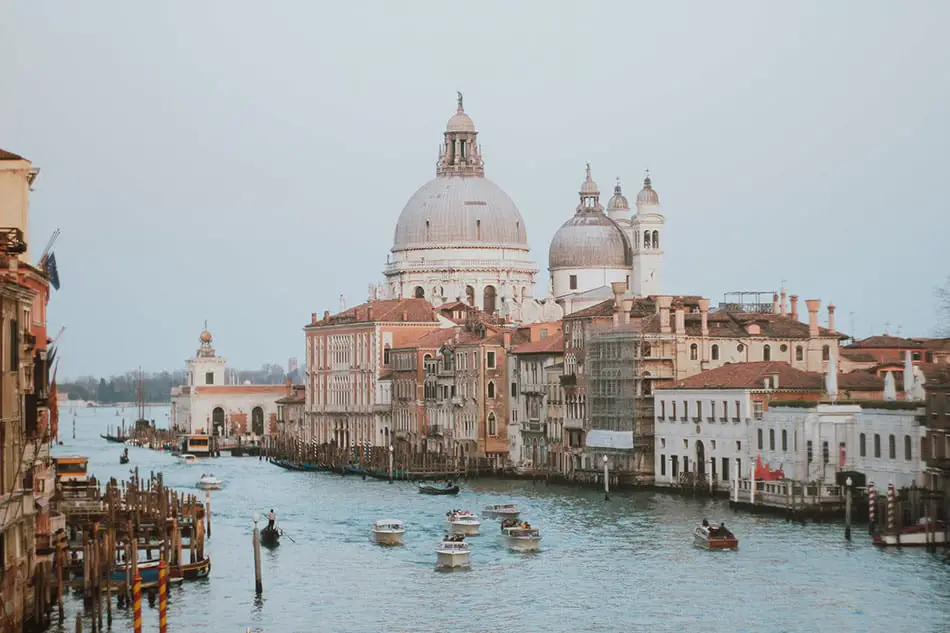
Venice is often referred to as the floating city, but surely the buildings can’t really float?
The buildings in Venice do not float. Instead, they sit on top of more than 10 million tree trunks. These tree trunks act as foundations that prevent the city from sinking into the marshlands below.
I have always found Venice to be a magical place. The buildings might not literally float, but how were they built? And why did they decide to build a city on top of the water in the first place? In this article, we answer all of these questions and look at the impact of rising sea levels and how the city is trying to protect itself from becoming submerged.
How Were The Buildings in Venice Built?
Venice’s buildings were built on top of more than 10 million tree trunks. These were forced down into the ground to create a stable and robust platform to build on top of. This prevents the buildings from sinking into the marshland, which is a volatile environment.
The length of the tree trunks is around 25m. This means that they reach the more solid sedimentary clay, which is below the marshland called Caranto. Reaching this layer of earth gave the foundations strength and stability.
This was a primitive version of a modern building technique called ‘pile foundations. This is when narrow holes are dug in the ground and filled with concrete. They act like the roots of trees to securely anchor a building to the ground.
Venice’s technique works precisely the same way, only using tree trunks instead of concrete.
On top of the wooden poles, 2 layers of thick wooden planks were added, and then a layer of stone blocks. Finally, this is topped with the city’s foundation walls, which we can see above the waterline today
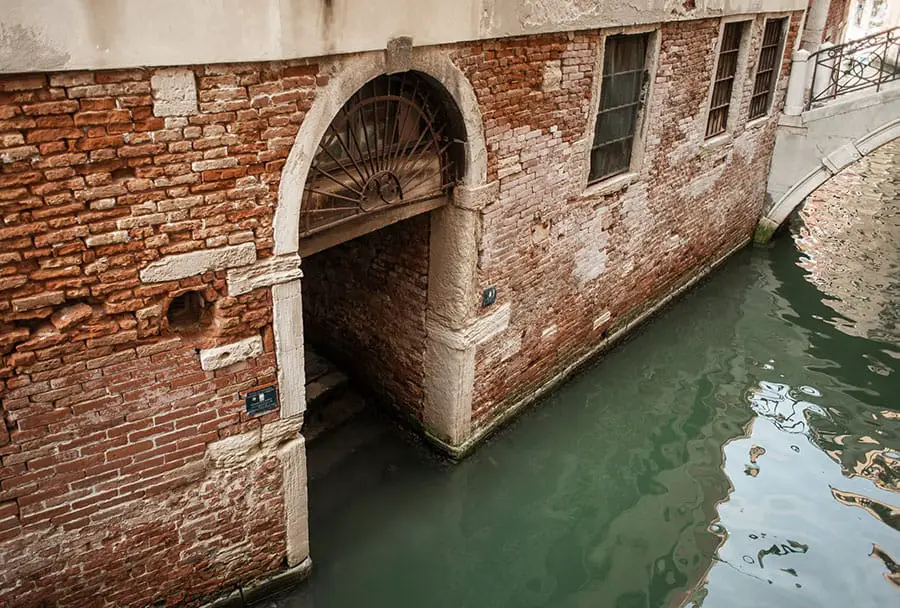
Why Doesn’t The Wood Rot?
The salty mud that surrounds the tree trunks has preserved the wood and prevented it from rotting. The mud prevents the wood from exposure to oxygen and microorganisms, meaning that decomposition can’t occur.
The constant flow of saltwater around wood causes it to petrify. This is a process where the pores within the wood are replaced by minerals, and as a result, the wood becomes as hard as stone.
The wooden piles were so effective that many of the original pieces remain in place today.
Why was Venice Built on Water?
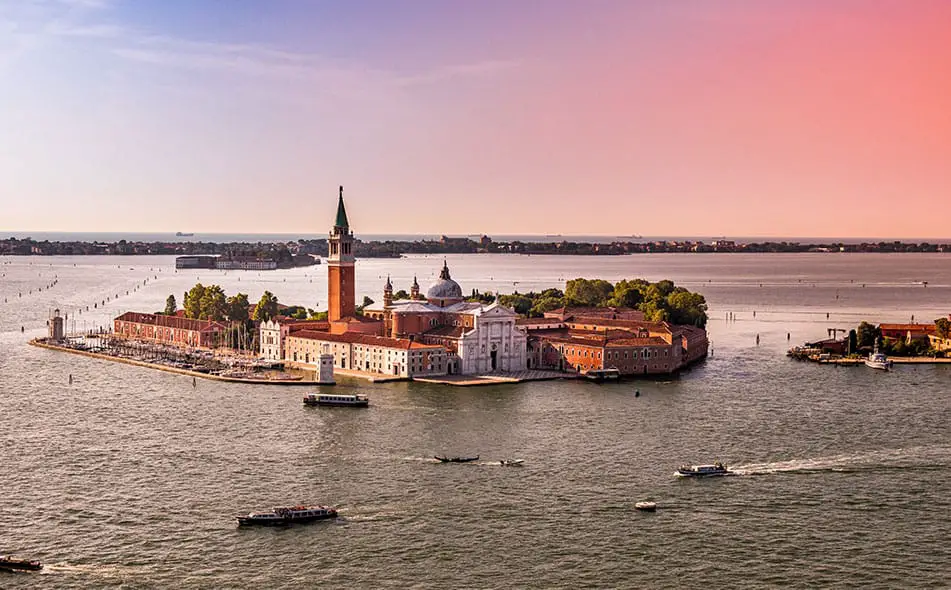
Who would choose to build a city on a remote group of muddy islands? You might think the logical place to build a city would be on mainland Italy, but that wasn’t what the early Venitian settlers decided to do.
Venice was built on the water to protect it from armies that invaded northern Italy. Its location’s inaccessibility made it an attractive place for its early settlers as it was difficult to attack.
The area to the north of Venice on mainland Italy was very susceptible to attack. Traveling through this region was the easiest way for invading forces to reach the fertile lands of northern Italy called the Po Valley.
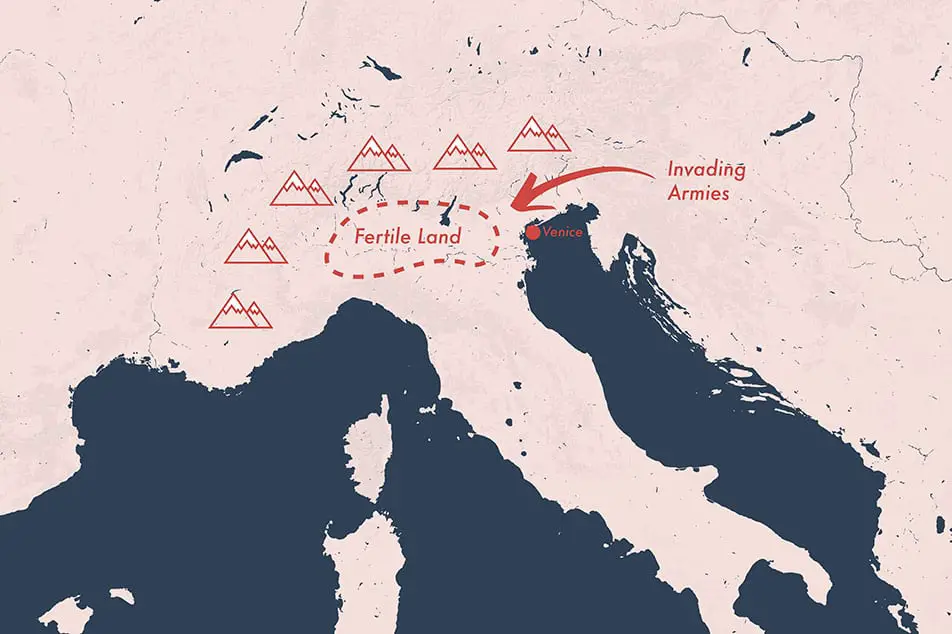
This region is protected from Europe by the Alps, apart from a small opening to the East. If invading armies wanted to reach the fertile Po Valley, the easiest option was to go through Veneto.
As a result of many invasions over hundreds of years, many Roman people were forced from their land. This created a refugee crisis in this region.
These displaced populations found the Venitian Lagoon and decided to settle there due to its natural defenses. The lagoon acted like a giant moat!
In 421AD, the city of Venice was born.
5 Famous Buildings In Venice
1. Saint Mark’s Basilica
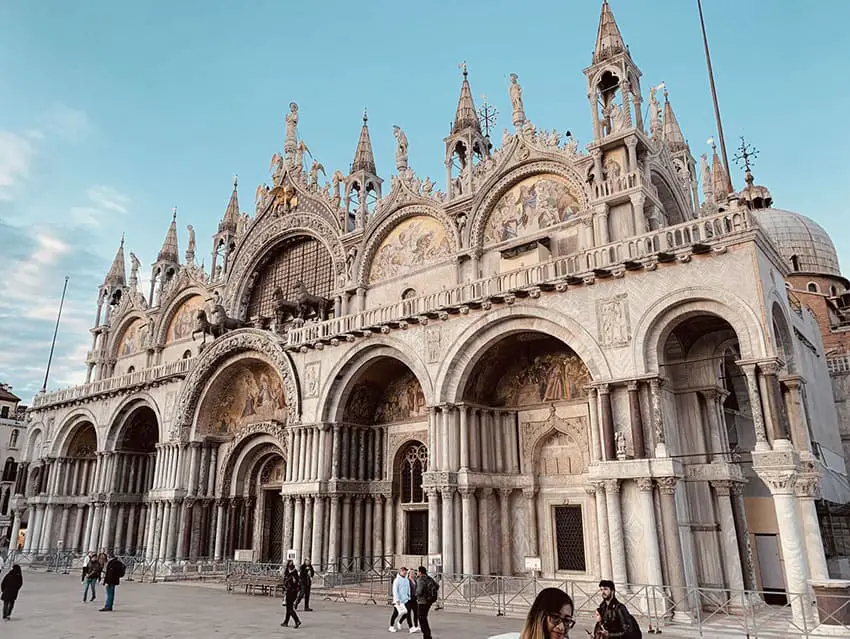
Known in Italian as Campanile di San Marco, the Saint Mark’s Basilica is a must-see building in Venice for anyone interested in architecture.
The church is an example of Byzantine architecture. It was built in 1063 to replace two earlier and smaller shrines.
The building has a lavish interior, with walls covered in golden mosaics and a roof that features 5 domes.
The building is named after St Mark, whose remains are contained within. That’s the same Saint Mark who helped write the Bible’s New Testament (you know… Matthew, Mark, Luke, and John). SO it’s no wonder that such a spectacular building was constructed to celebrate his life.
This is a truly remarkable building, as because of this, it can be jam-packed if you wish to visit. So expect to queue if you want to see the incredible interior. If you don’t want to wait, the building is still impressive from the exterior, so swing by St Mark’s Square and take a look!
2. Church of the Santissimo Redentore
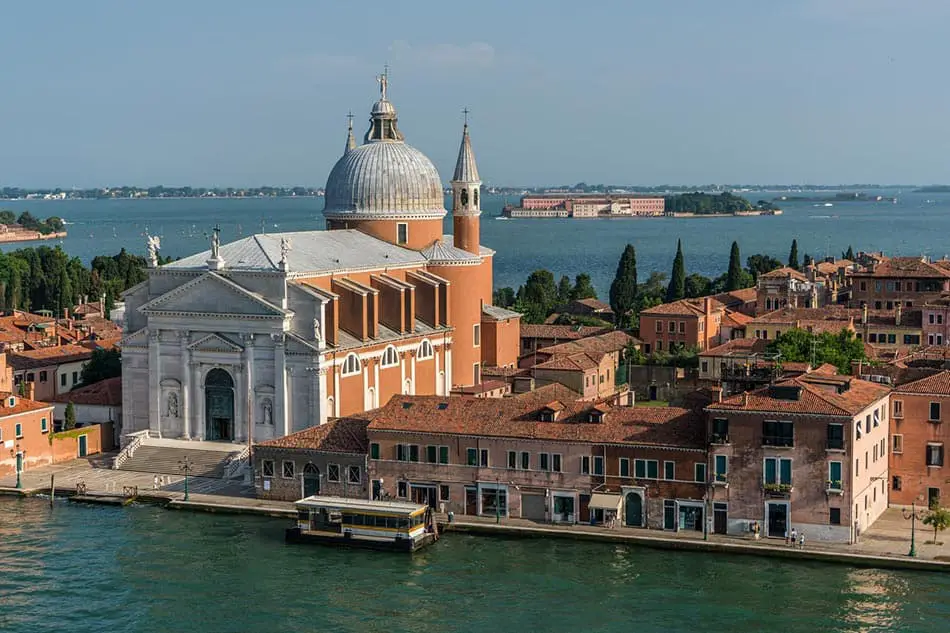
The Church of the Santissimo Redentore is a Roman Catholic church designed by architect Andrea Palladio and constructed in 1592.
The church was built to commemorate the 46,000 lives lost to an outbreak of the plague in 1575.
The interior of this church is much more modest than St Mark’s Basilica. However, it is still worth visiting as its interior is finely detailed and features many important art works.
This church is slightly away from the tourist hub, so you won’t have to queue to get in!
3. Doge’s Palace
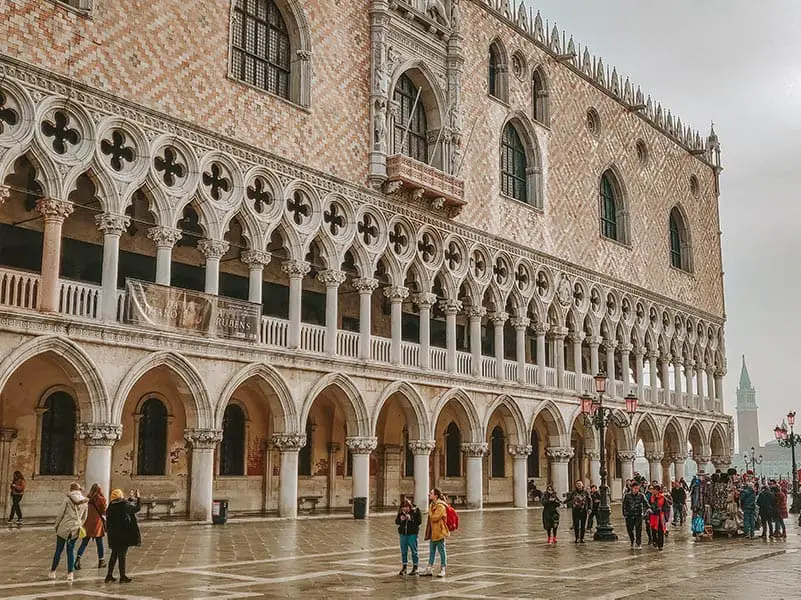
Doge’s Palace was built in 1340 and is an example of Venitian Gothic architecture. This is a style that takes its cues from Byzantine and Islamic styles.
This blend of Eastern and Western architecture perfectly represents how Venice was an important trading center in the past.
The building was initially built as a meeting place for members of the government. But in 1923, the building was converted into a museum and remains this way today, allowing visitors to view its richly decorated interior.
4. Basilica di Santa Maria Della Salute
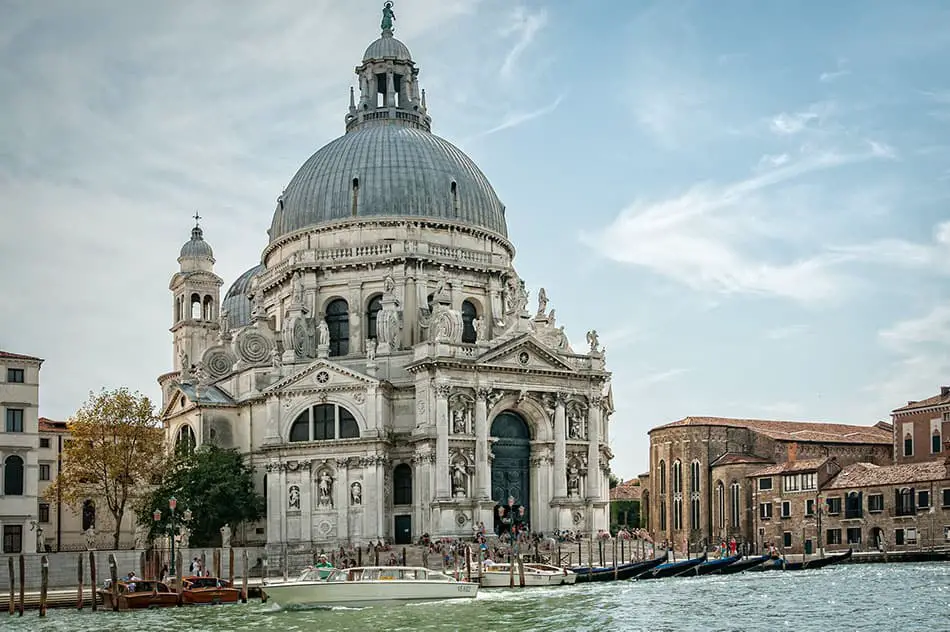
The Basilica di Santa Maria Della Salute, known locally as simply ‘Salute,’ was designed by Italian architect Baldassare Longhena and constructed in 1681.
The building features a giant dome, which has become an iconic part of the Venetian skyline. As such, the building is one of the most visited churches in the city.
5. Rialto Bridge
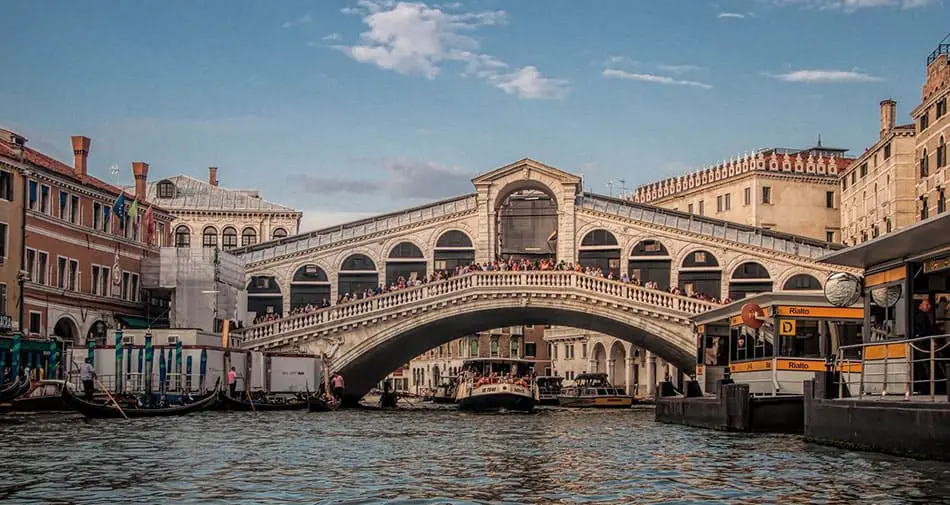
It’s not technically a building, but the Rialto bridge is one of Venice’s most iconic pieces of architecture.
Built in 1591, this is the oldest bridge over the Grand Canal.
Originally built to connect the regions of San Marco and San Polo, the bridge now serves an additional function by enabling electricity cables and other services to cross the water without being visible to the public.
Can Venice Be Saved From Rising Waters?
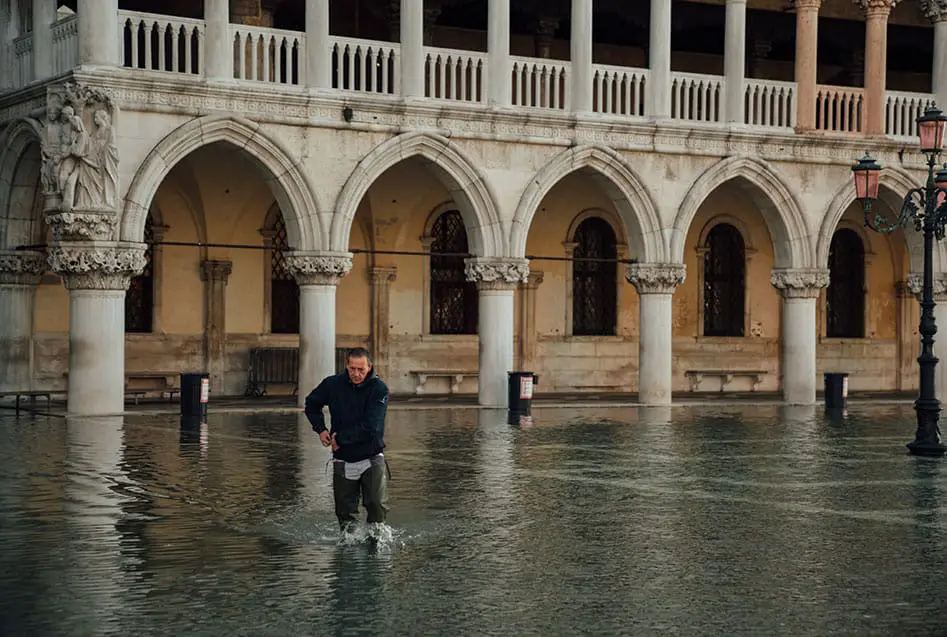
Is Venice Sinking?
Venice is said to be sinking at a rate of between 1 and 2mm per year. This is because Venice is constructed on top of a marshland that is slowly giving way under the city’s weight. On top of this, tectonic activity is causing the Adriatic plate, on which Venice is built, to lose altitude.
It’s Built On A Swamp
Venice is built on top of a swamp, and it may not surprise you that this isn’t the best place to build a city.
Even though the city was built upon highly effective foundations, the buildings’ extreme weight is causing the mud below to slowly give way.
Tectonic Activity
Venice sits on the Adriatic tectonic plate. This is slowly moving north, crashing into the Eurasian plate above. The Adriatic plate is forced underneath the Eurasian plate resulting in everything that sits on top (including Venice) to slowly sink.
Flooding In Venice
Although Venice is sinking between 1-2mm per year, the city’s main threat is from rising sea levels as a result of climate change. As a result, the sea level surrounding Venice is said to have risen 20cm in the last 100 years.
With increasing flood levels, the amount of damage caused is also getting higher.
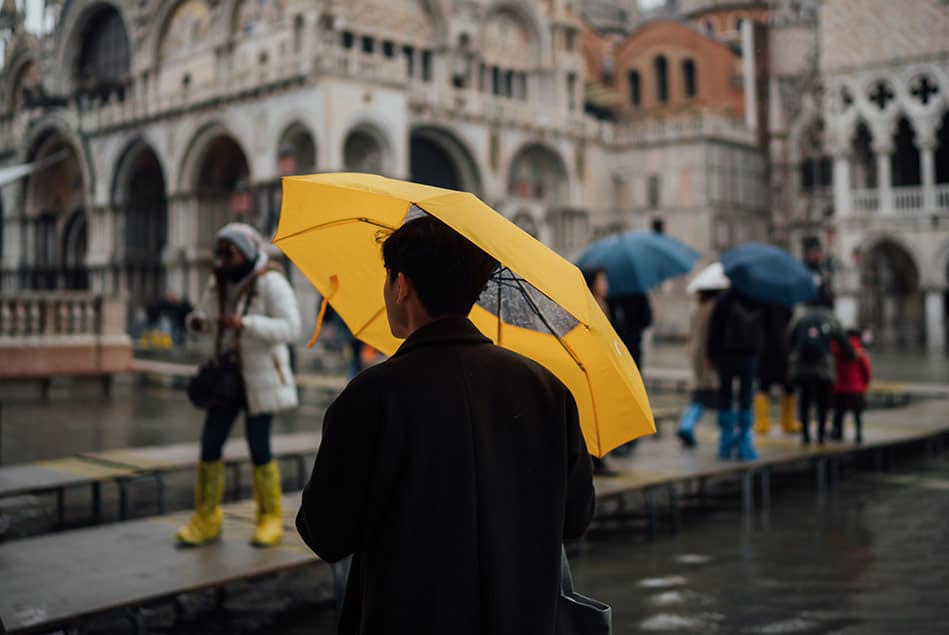
How Often Does Venice Flood?
Seasonal flooding has been a common occurrence throughout the history of Venice. However, in recent years the flooding has become more frequent and higher in level.
St Mark’s Square is the area of Venice which floods most frequently. Today, it can be expected that this area will be underwater over 60 times per year. This is far more than in 1900 when flooding was expected only 4 times.
| +80cm | St Mark’s Square is Flooded |
| +140cm | 90% of Venice Flooded |
| +187cm | 2019 Flooding |
| +190cm | 1966 Record Flooding |
Why Does Venice Flood?
High Tides – Acqua Alta
The Acqua Alta is a phenomenon in which high tides combine with strong northerly winds. The result is an abnormally high sea level, which causes Venice to flood.
This usually happens between Autumn and Spring.
The Acqua Alta is caused by a combination of astronomical events, the Sirocco winds, and a tidal phenomenon known as a seiche.
Astronomical Events
Celestial bodies can cause the sea level to rise higher than average. These high tides are usually caused by the moon but can also be impacted by the Sun or other planets.
Sirocco Wind
The Sirocco Winds are a result of hot air from the Sahara mixes with cooler air above the Mediterranean sea. When these winds reach the Adriatic sea, they are channeled towards Venice. This prevents water from leaving the Venetian Lagoon.
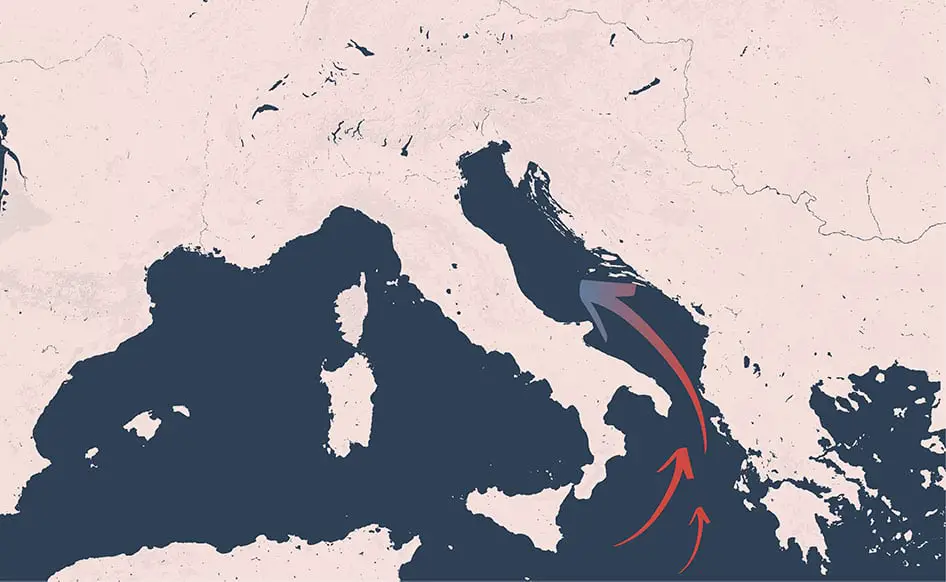
Seiche
The Shape of the Adriatic Basin causes an oscillating tidal motion called a seiche. This supplements the natural tides and causes much more extreme tidal events than in other parts of the Mediterranean.
Poor Management of The Lagoon
The flooding caused by the Acqua Alta has been exacerbated by poor management within the Venitian Lagoon.
One example of this is the dredging of deep channels to allow large ships to enter the shallow lagoon. The ‘Canale dei petroli’ was created in the 1960s to enable large oil tankers to reach the mainland of Italy near Venice.
These large channels allow storm surges to penetrate the lagoon further and in a shorter amount of time.
How Can Venice Protect Itself From Flooding?

Protecting Venice is crucial as sea levels are rising, and the city is slowly sinking. If nothing was done, it is predicted that the city would be uninhabitable by 2100.
River Diversion
One of the most significant interventions to protect Venice was the diversion of six major rivers that flowed into the Venitian Lagoon. This was to prevent the rivers from bringing additional silt and water to the lagoon.
Barrier Islands
Much work has been done to rebuild and extend barrier islands that run along the edge of the Venitian Lagoon. There used to be 9 openings to the lagoon, but this has now been reduced to 3.
These islands offer protection from the Adriatic Sea. The closing of gaps between the islands has also enabled the construction of a tidal barrier.
Tidal Barrier
The most significant and ambitious project to protect Venice is the construction of a large retractable tidal barrier.
The name given to the project is ‘MOSE,’ and it will sit at the opening to the Venice lagoon. When required, the wall rises out of the ocean, meaning there is no visual impact on the landscape when the barrier is not needed.
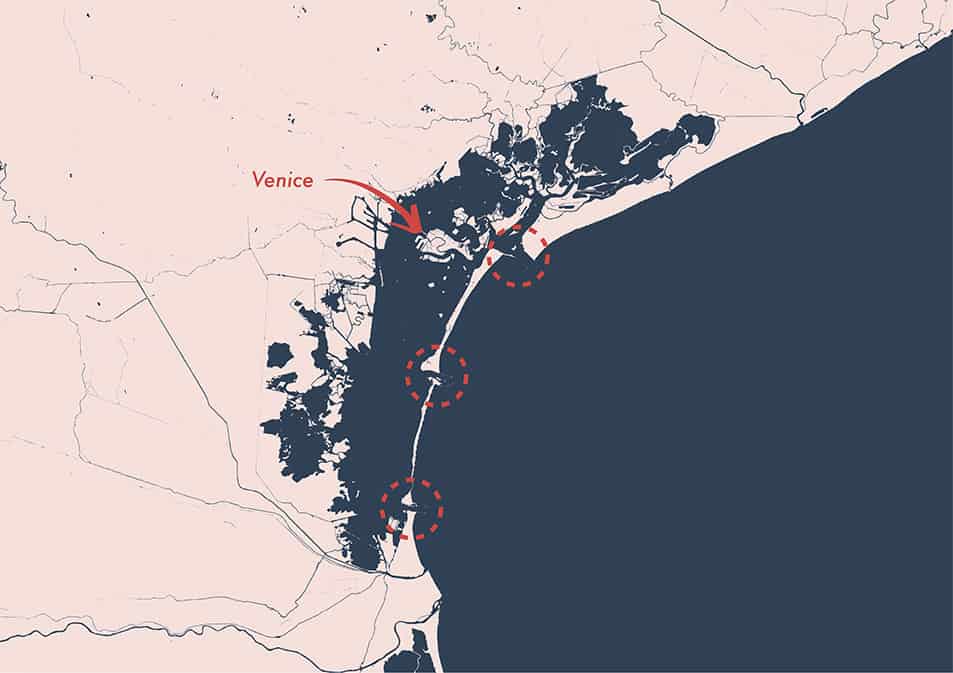
The wall will be built in 4 sections: Lido Inlet, Malamocco Inlet, Chioggia Inlet. These stretch between the barrier islands, which separate the lagoon from the Adriatic Sea.
The MOSE Sea Defense
How Does the MOSE Sea Defense Work?
The MOSE sea defense remains on the seabed by being filled with water.
When the gates are required to rise out of the sea, they are pumped full of compressed air, causing them to float.
When sea levels have returned to normal levels, the gates are filled with water and return to the base of the lagoon.
At current flooding rates, the MOSE barrier is expected to be raised up to 5 times per year.
When the sea defenses are in place, access to the port is still possible through navigation locks.
Problems With the Venice Sea Wall
Despite being a great idea in theory, the project has been plagued with financial, political, and environmental problems.
Over Budget and Behind Schedule
The project was initially launched in 2003 and is now running 10 years behind schedule. This is very late, considering the idea for the barrier was first proposed in 1988.
The project has continually run over budget. The original cost estimate of $3 billion has trebled to over $9 Billion.
Added to this, In 2014, the mayor of Venice Giorgio Orsoni was arrested in connection to funding irregularities in connection to MOSE, and it appears that €1bn could have gone missing.
Ecosystem
With sea levels continually rising and flooding becoming a more regular occurrence, the tidal barrier will need to be raised more frequently.
Suppose it gets to the point where the wall is raised almost permanently. In that case, there will be negative impacts on the ecosystem within the Venice Lagoon.
As the flow of water between the lagoon and the Adriatic sea will be restricted, the water within the lagoon will become more stagnant. This encourages the growth of algae along with the buildup of waste.
It Won’t Stop All Flooding
Although MOSE should stop the worst of the flooding in Venice. The barrier will only be raised for tides above 1.1m. This means that areas like St Mark’s Square will continue to flood when sea levels are 80cm.
Could Venice Be Raised?
Another radical suggestion to prevent flooding in Venice is to raise the entire city by 1 meter.
In 2013, a highly experimental student study by the University of Surrey proposed that this could be done by injecting silt below the city.
This is a very ambitious idea, and in reality, it is unlikely that this would be attempted. But, who knows, if sea levels rise above the MOSE tidal barrier, a more far-fetched solution may be the only option!

